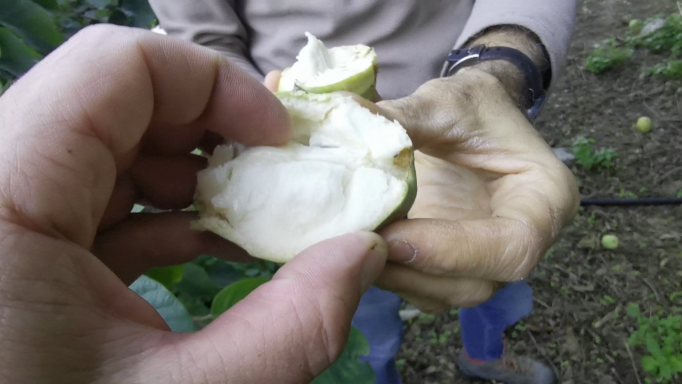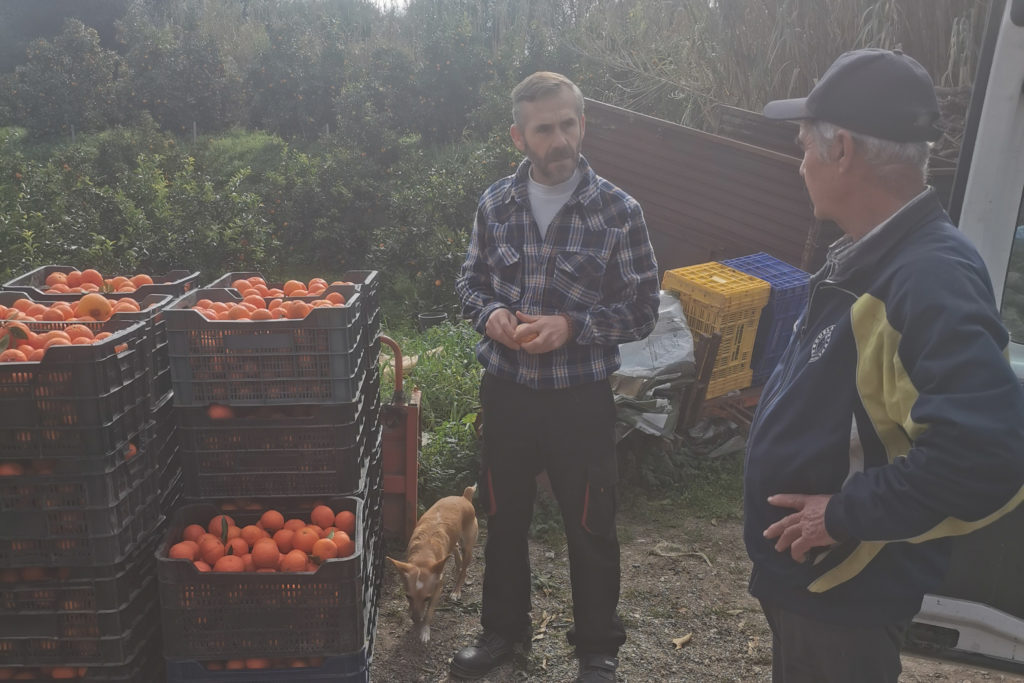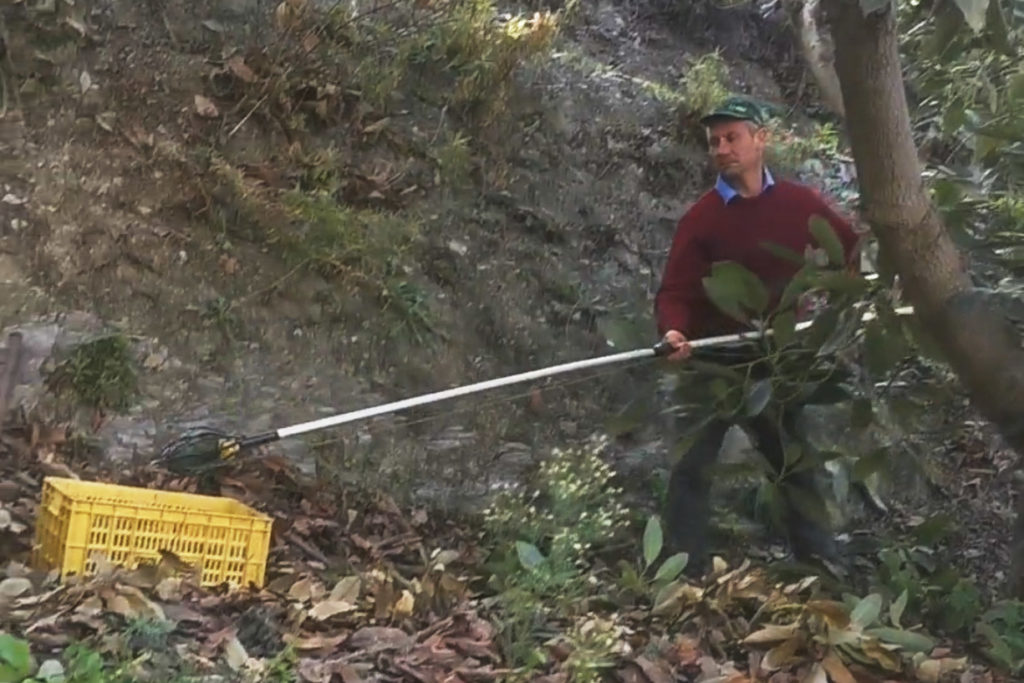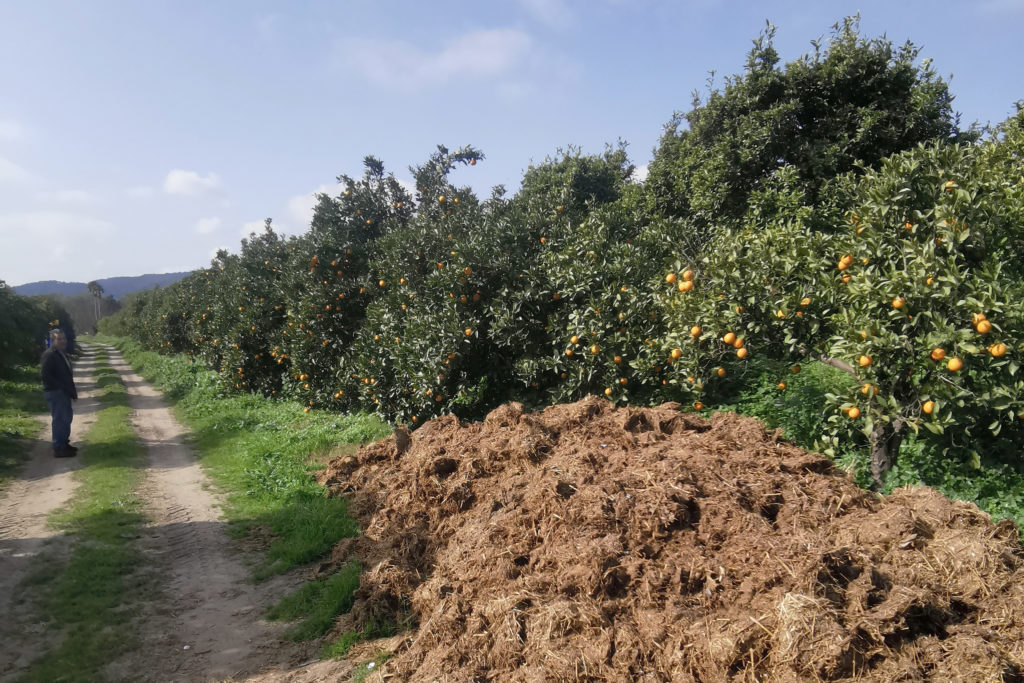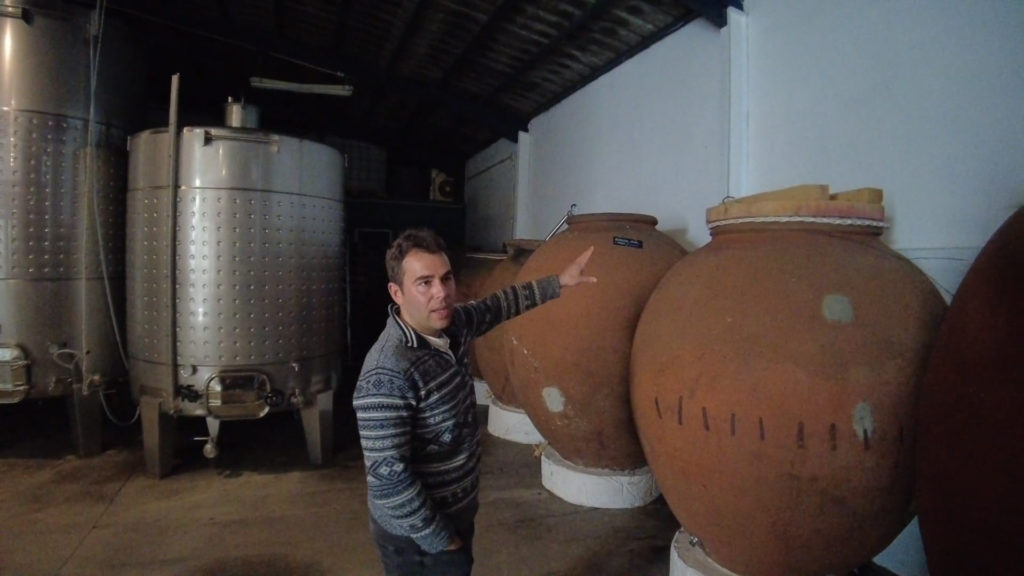Mark Twain called it ‘the most delicious fruit known to men’, C.R.Markam asserted that ‘he who has not tasted this fruit does not know what fruit is’ and Haenke crowned it the ‘masterpiece of nature’. Unlike its better known tropical brethren such as the pineapple, mango and avocado, and in spite of these glowing references, the chirimoya, or custard apple in English, is little known in Europe outside of exotic supermarkets. Even in Spain, where it is cultivated, it is not widely consumed very far from its southern production areas.
Que pena!
Now is the time to become familiar with this fruit, as its season in Spain goes from October until March. And after visiting Jose González, a custard apple producer and member of Tierra y Libertad cooperative, last week, I can tell you that the custard apple is truly delicious. It’s something like a combination of a myriad of tropical fruits, sweet but not too sweet, a touch of acidity, and a wonderful white creamy texture (hence the custard in the name). That is to say, nothing like you have ever tasted before.
The tree comes from South America, in the Andes of Peru, Ecuador, Colombia and Bolivia, where it grows at relatively high altitudes The tree comes from South America, in the Andes of Peru, Ecuador, Colombia and Bolivia, where it grows at relatively high altitudes (from 700 up to 2000 metres). The name chirimoya comes from the Quechua chiri(cold) and muya(seeds) because the seeds germinate under cold conditions (for the tropics!). The Moche peoples of northern Peru were enamoured by it already in 200 BC that they made ceramic chirimoyas as pieces of art! It was brought to Andalusia in the 1700’s, and commercial cultivation had certainly begun by the 1850’s as there are official records from this period in Granada recording its sale.
Since thince then the main cultivation of the custard apple in Spain has been in the irrigated valley (vega) around Jete, in Granada province, just inland from Almuñécar between Malága and Almería. For this reason the major variety grown in Spain is called ‘Fino de Jete’.
Jose’s family is from Jete, and part of the land he farms is in la vega de Jete, where he has around 2 hectares of custard apple trees, including multiple trees whose lives have spanned 3 centuries, being planted sometime towards the later part of the 19th century!
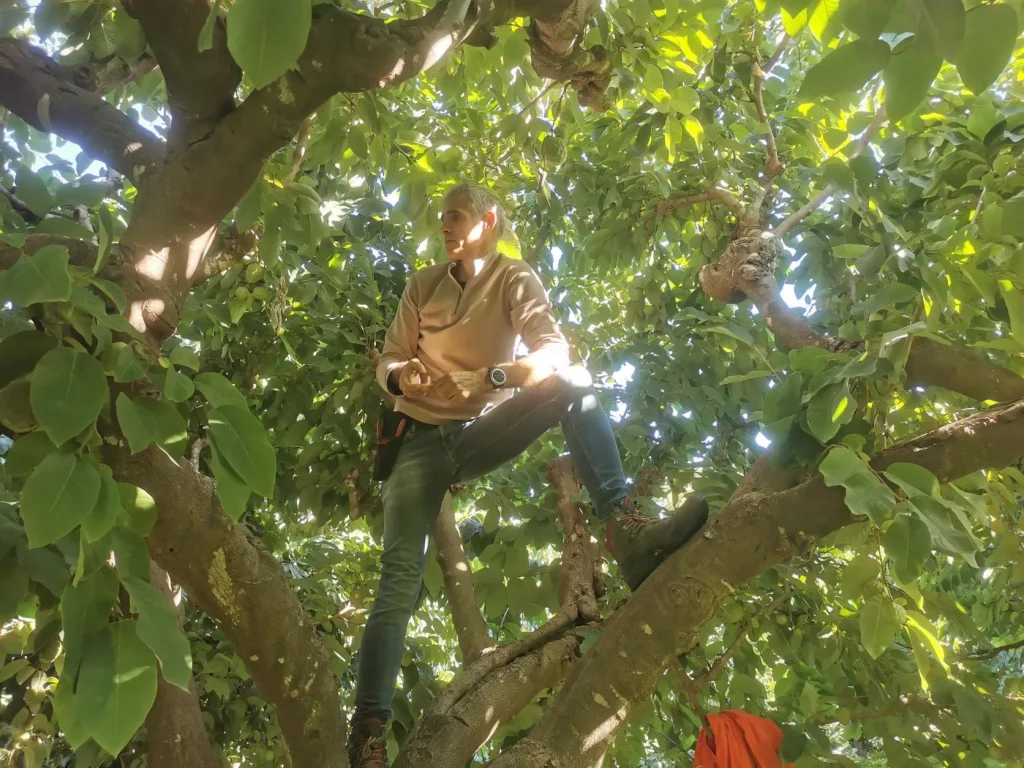
I visited Jose in the middle of December, on a beautiful sunny morning of the type you expect from la costa tropical. We spent the morning visiting three of his pieces of land near Jete, including his largest piece of custard apples, which his team where busily harvesting. Jose explained to me how the custard apple is cultivated, and compared to any other fruit it is a serious amount of work.
In summer, starting in June and running through to September, Jose hand pollinates the flowers. This is a huge amount of work, as he has to climb each tree three times at intervals of about 15 days and pollinate roughly a third of the 350 flowers that might be in the tree. And these aren’t dwarf trees like you see in apple or peach orchards these days. These are trees deserving respect, growing high and wide, with short trunks and branches the form of which kids instinctively want to climb. This is of course not by chance, as Jose prunes the trees to enable easy climbing.
The hand pollination over an extended period serves two purposes: first, it gives bigger fruit and second, it gives a consistent harvest each year. The season begins in October and between then and April Jose will climb each tree 7-8 times to harvest the ripe custard apples. You can see why having a custard apple orchard keeps you young and fit! Finally, in the Spring Jose climbs the trees one more time to prune.
While the custard apple is a lot of work to cultivate, it also has it’s benefits to Jose, who cultivates avocados and mangos also. The custard apple, unlike these crops which alternate between large and small harvests, gives consistent crops each year. It also gives work to his 3 employees year round, which is important to Jose as he wants to keep his employees (which he has managed to do) with him for the long term, as the work is skilful and training a long process. Also, Jose is committed to bringing back life to his rural area, which means people working in the countryside year round, among other things. No aspect of custard apple production can be mechanised, so as long as there are custard apples in la vega de Jete, there will be people working here.
Ecologically speaking the custard apple also has advantages for Jose. His trees are already quite old (60 years plus in many cases) and completely shade the ground, maintaining the moisture in the soil even in the summer. Also, the leaf litter and prunings of these huge (for fruit) trees is significant and according to Jose provides the best fertiliser possible for the trees. As they decompose they also feed a vibrant microbial life in the soil. Walking under the canopy of his trees you could be forgiven thinking that you were in a sub-tropical jungle, with the noise of the water flowing and birds chirping away always in the background, rather than in a commercial fruit orchard whose production is exported as far as France and Belgium.
Finally, there is also the cultural and social aspects to the custard apple production. From at least Jose’s great grandfather his family have been cultivating custard apples. First as agricultural day labourers and later as small land holders. On the piece of land I visited there is a custard apple tree over 130 years old (read about it here), which his grandfather used to tell him stories about from his own childhood, from the beginning of the 20th century. The history of this tree, and the endless stories told sitting in its shade, are yet another reason Jose is attached to the custard apple, an affection no less important then the rational economic and ecological reasons to cultivate this obscure fruit.
Custard apples are perfect to eat as a snack or a dessert as they are, just don’t eat the seeds. You can scoop out the flesh with a spoon or peel and slice them up. They are packed full of vitamins and micronutrients, being high in vitamins B6 and C, fibre, riboflavin(vitamin B2) and potassium. You can also peel and seed them to make a wonderfully creamy smoothie, use the pulp and mix with a little milk and milk powder then freeze into popsicles, or make the very simple custard apple cream with 2 peeled and seeded custard apples, roughly chopped and adding 1 1/3 cups of heavy whipping cream, 1 teaspoon vanilla extract and 1/3 cup of confectioners sugar. Mix well and refrigerate for an hour.
Buen provecho!
Confirmed father, alleged farmer, an occasional writer, undoubted if undistinguished linguist, shameless traveller, unreformed poet of the Chinese recluse type.

